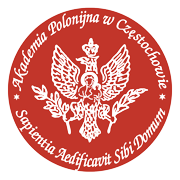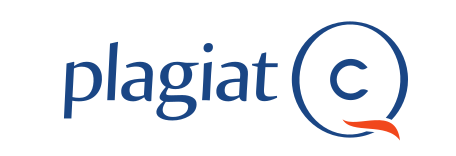SPECIFIC FEATURES OF THE USE OF ARTIFICIAL INTELLIGENCE (ELECTRONIC PERSONHOOD) IN THE SPHERE OF EMPLOYMENT
Abstract
This article examines the increasing integration of modern technologies into contemporary employment relationships. It argues that artificial intelligence can be interpreted as a form of digital personhood (avatar). The concept of avatar is analyzed through three main dimensions: automation, which consists of symbols and actions that allow for full or partial imitation of the avatar’s activity; enhanced identification, such as user accounts, email addresses, or profiles in corporate governance systems; and anonymity, which facilitates the representation of corporate brands. The study highlights both positive and negative consequences of digital personhood in the workplace. On the positive side, it highlights the expansion of employment opportunities, the automation of routine tasks, and increased productivity. However, the article also identifies new challenges, including changes in employment structures, the need for retraining, risks of digital inequality, cybersecurity issues, and the use of neurotechnology in the workplace.
References
3. AI Frontiers: Innovations, Breakthroughs, Challenges. (May 2025).
4. Bailenson, J. N. (2018). Experience on Demand: What Virtual Reality Is, How It Works, and What It Can Do. W. W. Norton & Company.
5. Bélisle, J.-F., Bodur, H. O. (2010). Avatars as information: Perception of consumers based on their avatars in virtual worlds. Psychology & Marketing, 27(8), 741–765. https://doi.org/ [doi if available]
6. Benford, S. D., Snowdon, D., Greenhalgh, C. M., Ingram, R. J., Knox, I. (1995). VR6jVIBE: A virtual environment for cooperative information retrieval. Computer Graphics Forum, 14(3), 349–360.
7. (Benford et al., 1995; Lanier, 1996; Suler, 1999).Benford S. D., Snowdon D., Greenhalgh C. M., Ingram R. J., Knox I. VR6јVIBE: a virtual environment for cooperative information retrieval//Computer Graphics Forum. 1995. Vol. 14 № 3. P. 349–360. Lanier R. Cyberpunk Dictionary//Communication. 1996. Vol. 1 (2). Suler J. The psychology of avatars and graphical space in multimedia chat communities//The Psychology of Cyberspace. 1999.
8. Cascio, W. F., and Montealegre, R. (2016). How technology is changing work and organizations. Annu. Rev. Organ. Psychol. Organ. Behav. 3, 349–375. doi: 10.1146/annurev-org- psych-041015-062352
9. Dionisio, J. D. N., Burns, W. G., & Gilbert, R. (2013). 3D Virtual Worlds and the Metaverse: Current Status and Future Possibilities. ACM Computing Surveys, 45(3), 34.
10. European Parliament. (2016). Regulation (EU) 2016/679 (General Data Protection Regulation). Official Journal of the European Union.
11. Employment and Society, 34(1), 56–75. https://doi.org/10.1177/0950017018785616
12. Fitzgerald, M., & Kruschwitz, N. (2013). Embracing Digital Technology: A New Strategic Imperative. MIT Sloan Management Review.
13. Hirsch, J. (2019, September 2). Worker protection laws aren’t ready for artificial intelligence, automation and other new technology. Guest Column.
14. Horizon Report for The Law Society. (2022, August). Neurotechnology, law and the legal profession (p. 5).
15. International Labour Organization. (2019). Convention No. 190: Convention on the elimination of violence and harassment in the world of work.
16. International Labour Organization. (1958). Convention No. 111: Discrimination (Employment and Occupation) Convention.
17. Kshetri, N. (2021). 1 Blockchain and Work in the Fourth Industrial Revolution. Journal of Business Ethics, 162(4), 735–749. https://doi.org/10.1007/s10551-018-3952-9
18. Microsoft. (2023). Microsoft Mesh: Building the Metaverse for Work. Microsoft Official Blog.
19. Ochoa, T. T. (2012). Who owns an avatar? Copyright, creativity, and virtual worlds. Vanderbilt Journal of Entertainment and Technology Law, 14, 958–991.
20. Suler, J. (1999). The psychology of avatars and graphical space in multimedia chat communities. In The Psychology of Cyberspace.
21. De Stefano, V. (2016). The Rise of the “Just-in-Time Workforce”: On-Demand Work, Crowdwork, and Labor Protection in the “Gig-Economy”. Comparative Labor Law & Policy Journal, 37(3), 471–504.
22. De Stefano, V. (2019). Negotiating the algorithm: Automation, artificial intelligence and labour protection. Comparative Labor Law & Policy Journal, 41(1).
23. Walmart. (2024). Enhancing Employee Engagement through Virtual Avatars. Walmart Corporate Reports.
24. Wood, A. J., Graham, M., Lehdonvirta, V., Hjorth, I. (2020). Good Gig, Bad Gig: Autonomy and Algorithmic Control in the Global Gig Economy. Work, Employment and Society, 34(1), 56–75. https://doi.org/10.1177/0950017018785616
Abstract views: 126 PDF Downloads: 45







